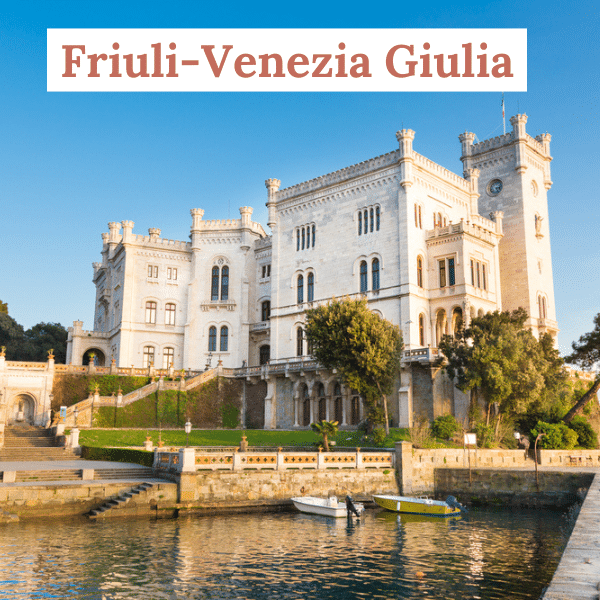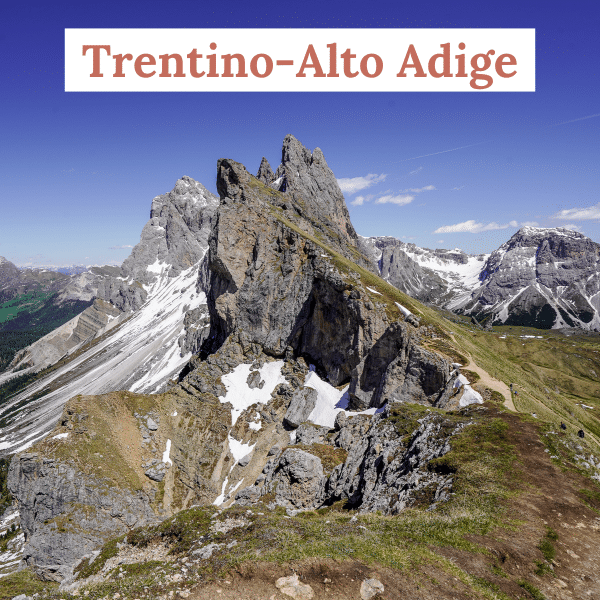The 8 regions of northern Italy make up a seemingly endless collection of treasures from art to history to northern Italian cuisine, natural beauty, and culture!
Venice, Lake Como, and the Cinque Terre are indeed beautiful places but when you explore beyond these popular northern Italian destinations, rolling hills, the majestic peaks of the Alps, UNESCO World Heritage Sites, and numerous lesser-visited cities and small towns await.
Discover each region of northern Italy including their locations and some of the best places that make each one worthy of a potential spot on your northern Italy itinerary.
What are the 8 Regions in Northern Italy?
To be sure we’re all starting from the same point, the Northern Italy regions are listed below with their names in English and Italian.
From west to east, the regions are:
- Piedmont (Piemonte)
- Aosta Valley (Valle d’Aosta)
- Liguria
- Lombardy (Lombardia)
- Emilia-Romagna
- Trentino-Alto Adige
- Veneto
- Friuli-Venezia Giulia
Northern Italian Regions Map
On the map below, you’ll see each of the regions and their location relative to each other and Italy as a whole.
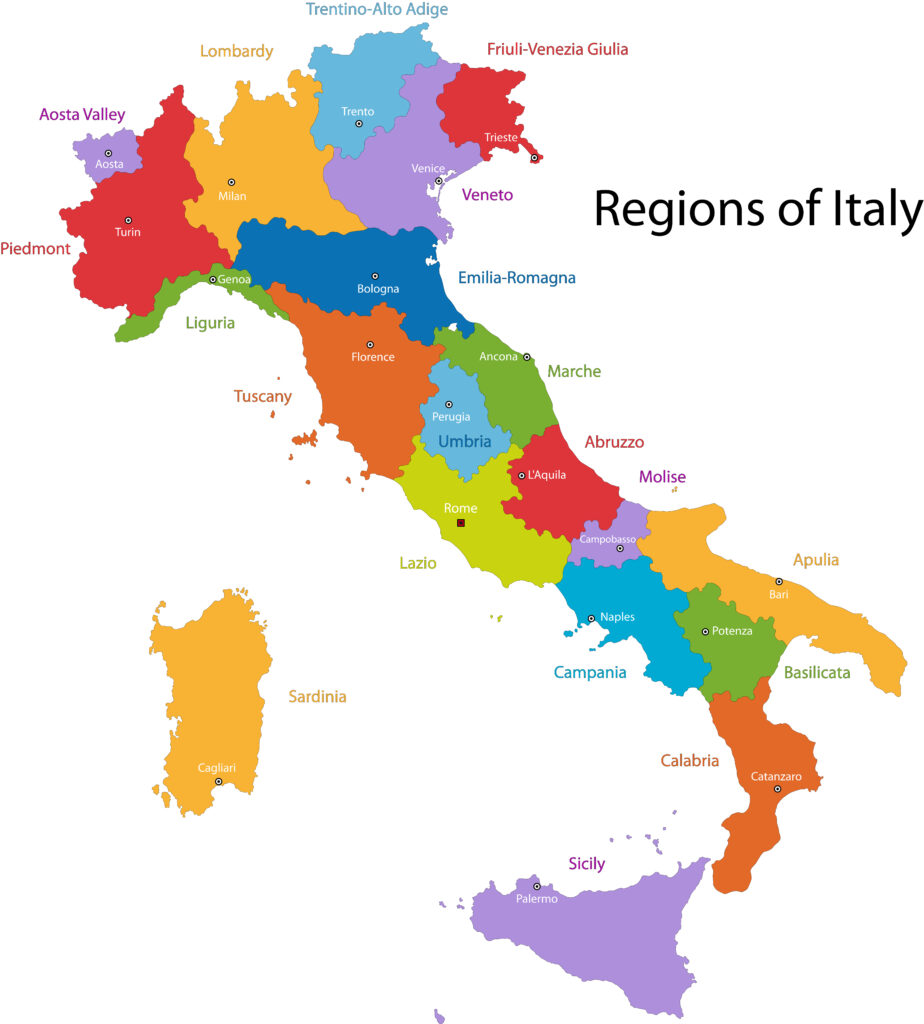
Each region has its own landscape, rich history, cuisine, and even dialect that makes it unique from the others. These characteristics have played a direct role in the culture of each region.
Let’s explore each northern region of Italy so you can plan the best trip to northern Italy, whether you’re a first-time visitor or someone whose heart calls them back year after year to discover new places and savor the la dolce vita! And if you’re looking for a map with cities, airports, lakes, and UNESCO World Heritage Sites, check out this detailed map of northern Italy.
Piedmont

Beautiful Piedmont (Piemonte in Italian) sits along Italy’s western border with France and is the largest of northern Italy’s regions. When translated, “Piemonte,” means “foot of the mountains.” From the green rolling hills of Monferrato and the Langhe to Piedmont’s largest city, Turin (Torino in Italian), the snow-capped Alps loom large from the horizon.
Highlights:
- Turin was Italy’s first capital city. Its elegant piazzas and refined architecture prominently display the history of the House of Savoy, the royal family that ruled in this northern part of Italy and eventually helped to unify the country. Turin is also the birthplace of FIAT and Gianduia, a chocolate and hazelnut paste sweet that is insanely addictive!
- Piedmont’s Monferrato, Langhe, and Roero regions are home to some of Italy’s best wines, like Barolo and Barbaresco. The UNESCO-recognized area is also world-famous for its truffles, especially white truffles. The Fall harvest season is a great time to visit regional cities like Alba during its International White Truffle Fair and to discover local wines from the region’s numerous vineyards.
Hidden Gems:
- The cities of Asti and Alba
- Borromean Islands on Lake Maggiore
- Lake Orta
- Forte di Fenestrelle
- Sacra di San Michele
- Palace of Venaria (La Venaria Reale)
How to Get There:
- Turin-Caselle Airport is about 10 miles northwest of Turin. There are no direct flights from the U.S. but you can connect via many other European cities into Turin.
- Turin is well-connected to Italy’s railways. The high-speed train goes between Milan and Turin in just 1 hour. Travel to Genoa by train is less than 2 hours.
Aosta Valley

The Aosta Valley is in Italy’s Alpine northwest corner, just above Piedmont and along the border with France and Switzerland. It’s Italy’s smallest region with the fewest people. But what it lacks in total area, it makes up for in height! From the Valle d’Aosta, you can see some of the highest peaks in Italy and Western Europe. The mountainous landscape of the Alps comes with spectacular vistas, some of Italy’s best hiking, and of course, amazing skiing and other winter sports.
Highlights:
- Gran Paradiso National Park was the first to be established in Italy. Its mountainous terrain is home to the ibex and many other types of wildlife. You can hike, bike, and even climb during the summer. In the winter, grab your skis or snowshoes to enjoy the park’s trails.
- Tucked into the valleys, you’ll find castles and Roman ruins, like Porta Praetoria and Castel Savoia.
- Cervinia and Courmayeur are among Italy’s best winter destination for skiing.
Hidden Gems:
- Fort Bard (Forte di Bard in Italian)
- Skyway Monte Bianco to take in the views over the Alps from more than 11,000 feet
- Italian fondue(!) made with delicious fontina cheese
How to Get There:
- The town of Aosta, which is in the heart of the Aosta Valley, is about 72 miles north of Turin-Caselle Airport and 110 miles to the west of Milan’s Malpensa Airport. Rent a car and reach the Valle d’Aosta within 60-90 minutes.
- You can also get to Aosta by train. Turin’s Porta Susa and Porta Nuova run several daily direct trains to the town of Aosta in less than 2 hours. Just keep in mind that the best way to get around the Aosta Valley is by car.
Liguria

Spectacular Liguria is the curved area of land south of Piedmont, spanning the Mediterranean coastline. The region runs east from the French border to just south of La Spezia along the border with Tuscany. Also known as the Italian Riviera, Liguria’s seaside towns cling to the region’s cliffs and are nestled into the hilly landscape. Genoa is the area’s main city and busiest port.
Highlights:
- The Italian Riviera, home to tourist hotspots like the Cinque Terre, Portofino, and Santa Margherita, boasts some of Italy’s most beautiful beach towns. Colorful villages, turquoise water, terraced cliffs lined with grapes, and Mediterranean sunsets are just a few of the things that make this area so special.
- The city of Genoa is often overlooked by visitors planning time in Liguria but it’s a big miss! Genoa’s historic center with its palaces and cathedrals, the scenic vantage points to overlook the city, and neighborhoods like the Boccadasse and Nervi all contribute to the city’s beauty.
- Liguria is known for pesto, seafood, and focaccia and all 3 are a must-eat while traveling throughout the region!
- Beyond the beaches, there are natural areas like Cinque Terre National Park, Porto Venere Regional Nature Park, and Mount Portofino Natural Regional Park which have walking and hiking trails spanning the coastline and connecting lesser-known villages and scenic points.
Hidden Gems:
- Genoa (not to be overlooked!)
- San Fruttuoso
- Camogli
- Porto Venere
- Western Liguria
How to Get There:
- Genoa’s Christopher Columbus Airport is a few miles west of Genoa’s main harbor area and its famous aquarium. There are no direct flights from the U.S. to Genoa but you can connect via several other European cities like Amsterdam, Frankfurt, and Munich.
- Genoa isn’t as well-connected by high-speed rail as other cities, although this is changing. You can connect to the city via Turin and Milan. There are also many regional trains that run from points in northern Italy to Genoa.
Lombardy
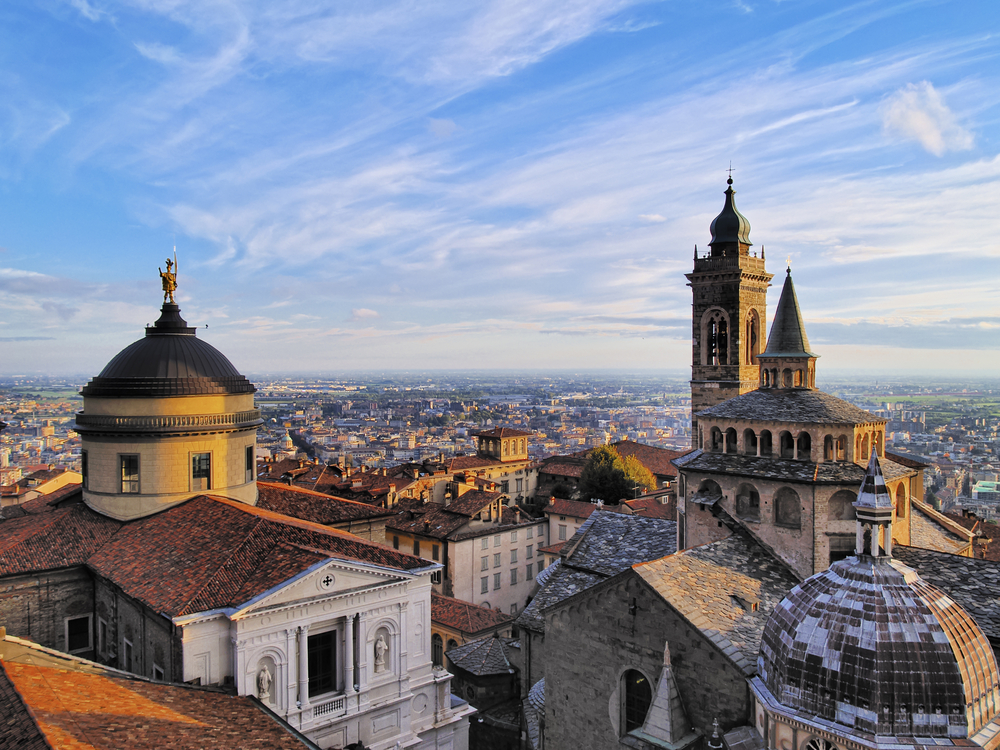
Lombardy (Lombardia in Italian) is at the center of northern Italy with Piedmont to the west, Veneto and Trento-Alto Adige to the East, and Emilia-Romagna to the south. Switzerland is on the northern border. Milan is Lombardy’s capital city, as well as an international gateway to northern Italy. Spanning out from the Milan metropolitan area, you’ll find mountains, world-famous lakes, renaissance architecture, and historic towns and villages.
Highlights:
- Milan is the region’s busiest city. The most famous attractions are the Duomo with its rooftop climb and the Santa Maria delle Grazie Church, where Da Vinci’s Last Supper painting can be viewed. It’s also no secret that Milan and fashion go hand in hand! As a result, there is no shortage of shopping opportunities, from the high-end shops in the fashion quadrilateral area to the more budget-friendly brands on streets like Via Torino.
- Lombardy is home to part of Italy’s famous Lakes Region. Lake Como is just 90 minutes north of Milan. Lake Iseo, as well as parts of Lake Maggiore and Lake Garda, are also just a short distance from Milan. The towns around the lakes offer an abundance of outdoor activities, cultural attractions, and dining opportunities. Bellagio is the most popular tourist destination at Lake Como, but make time for Varenna and Menaggio. Don’t miss Sirmione on the southern shores of Lake Garda, with its fantastic castle and ancient villa ruins!
Hidden Gems:
- Bergamo
- Brescia
- Limone Sul Garda
- Mantua
- Lake Iseo
- Sacro Monte di Varese
How to Get There:
- Milan’s Malpensa Airport is the busiest airport in northern Italy and only the second busiest in all of Italy after Rome’s airport. Many international flights fly directly into Milan, including flights from the U.S., and Canada. After that, the nearest airports are Milan’s Linate Airport (just a couple of miles outside of Milan) and Bergamo’s Airport, about an hour northeast of Milan. Both are busy hubs for many flights connecting from cities across Europe and from within Italy.
- Milan’s Central Station (Milano Centrale) is a major hub for high-speed and regional trains connecting the regions of northern Italy and the rest of Italy further south. You can connect from Turin to Milan in 1 hour, Bologna to Milan in just over an hour, and Venice to Milan in as little as 2 hours and 15 minutes.
Emilia-Romagna

The southernmost of Italy’s northern regions, Emilia-Romagna shares borders with Lombardy and Veneto to the north, Tuscany and Marche to the south, and a small slice of Liguria to the west. The region’s geography spans from the Apennine mountains to the coast of the Adriatic Sea offering a lot of diversity in between. Bologna is the region’s main city, famous for its mouth-watering food experiences. Within easy reach from Bologna, you’ll find cities and small towns with Byzantine, medieval, and Renaissance treasures, as well as outdoor enjoyment at the region’s parks and beaches, all while discovering Emilia’s culinary richness.
Highlights:
- Bologna has historical sites to explore and a lot of amazing food to taste! Climb the nearly 500 steps of Asinelli Tower. Not only will you have a fantastic view over the city’s rooftops, but you’ll also feel less guilty about all the irresistible food later! The city also makes a great base for day trips to nearby cities and towns, including Ferrara, Modena, Parma, Rimini, and Ravenna.
- East of Bologna and close to the Adriatic coast, glittering Ravenna sits with an incredible 8 UNESCO World Heritage Sites. Ravenna was once the capital of the Byzantine Empire and the city’s churches were adorned with spectacular mosaics. If you love history, art, and extraordinary sites, Ravenna is a can’t miss.
- Emilia-Romagna is known for its Parmigiano Reggiano, Proscuitto, Balsamic Vinegar, and Tortellini/Tortelloni to name a few. Don’t miss the chance to taste your way through the region.
Hidden Gems:
- Po River Regional Park (UNESCO Recognized for its biodiversity)
- Brisighella
- Comacchio
- Day trip to the Republic of San Marino
How to Get There:
- Bologna Airport is just a few miles northwest of Bologna. There are no direct flights from the U.S. but you can connect via many other European cities into Bologna.
- Bologna is well-connected to Italy’s rail lines. The high-speed train goes between Milan and Bologna in just over 1 hour. From Florence to Bologna is just 35 minutes and about 90 minutes from Venice to Bologna. There are also numerous regional trains connecting Emilia Romagna making it possible to explore the region’s main cities and towns by train.
Trentino-Alto Adige
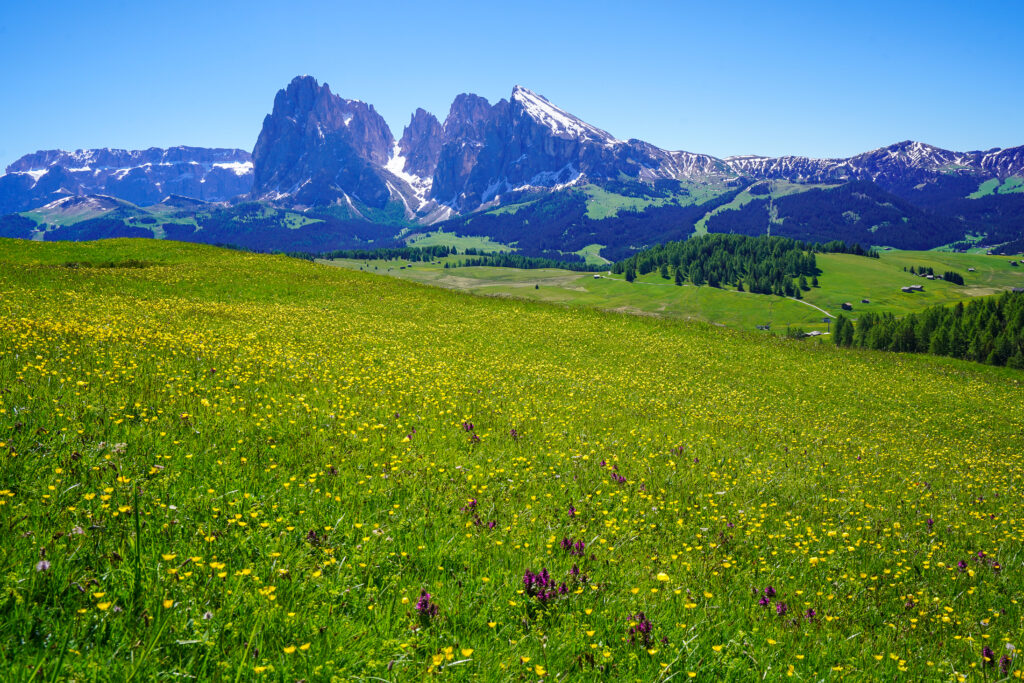
Breathtaking Trentino-Alto Adige sits in Itay’s northernmost reaches along the border of Switzerland and Austria. Veneto and Lombardy surround the region on its southern, eastern, and western sides. Home to the jagged peaks of the Dolomites (a UNESCO World Heritage site), incredible Alpine scenery, and glass-like mountain lakes, this northern Italy region is like no other. The mountainous region is perfect for road-tripping, hiking, outdoor pursuits, and wintertime sports. Because of the region’s history, it has strong ties with Austria. As you explore and experience its food, languages, architecture, and landscapes, it’s easy to feel as if you’ve crossed the border from Italy to Austria.
Highlights:
- Hiking in the Dolomites is one of the best experiences to have in northern Italy! The Tre Cime Circuit will take your breath away. The Adolf Munkel Trail to spectacular Geisler Alm is a can’t-miss day hike. Ride the Seceda cable car from Ortisei and head towards Pieralongia. Take the circular trail around beautiful Lago di Braies. And don’t miss Alpe di Siusi, the largest Alpine meadow in the Alps which is accessed from Ortisei’s other cable car. If you visit in early June, the meadow is awash in color from the blooming wildflowers!
- This region is heaven for winter sports enthusiasts offering hundreds of miles of slopes to suit a variety of levels. The region’s ski areas are equipped with state-of-the-art cable cars and lifts and have an active apres-ski scene. Everyone can enjoy the jaw-dropping mountain vistas of the Italian Alps whether on skis, snowshoes or from a horse-drawn sleigh.
Hidden Gems:
- Trento
- Santa Maddalena & Val di Funes
- Buonconsiglio Castle
How to Get There:
- Verona’s Airport is the closest to the region and its capital city, Trento. From the airport, it’s about 1 hour by car to Trento and 2 hours by car to Ortisei. You can also take an airport shuttle to Verona’s train station. From there, you can take a train to Trento in just 1 hour.
- Traveling between the region’s larger cities and towns can typically be done by train. However, the region’s mountainous landscape makes it more challenging to connect smaller towns. It’s best to rent a car to fully explore this region.
- If you’re visiting during the winter holiday and ski seasons, look for special trains, buses, and cable cars to help reach these areas.
Veneto

Veneto is in Italy’s northeast, bordering 4 regions of northern Italy, Lombardy, Trentino-Alto Adige, Friuli-Venezia Giulia, and Emilia-Romagna. The region is blessed with some of northern Italy’s top sights, including Venice, Lake Garda, Verona, and the Dolomites. In its romantic, hilly countryside, you’ll find vineyards growing grapes for Valpolicella and Soave wines, beautiful villages, historic ruins, and opportunities to reconnect with nature.
Highlights:
- Undoubtedly, Venice steals the show with its picturesque canals connected by arched bridges, the city’s historic sites, and the unforgettable discoveries you can stumble upon when you get lost in Venice’s labyrinth-like design. Spend at least a couple of days in Venice to explore the islands of Burano and Murano and see some of the lesser-visited palazzos, bridges, and piazzas day trippers miss.
- Verona often gets overlooked by first-time visitors but it’s a huge miss! The historic center of the city has a Roman amphitheater that is older than the Colosseum and rivals the prettiest Italian cities throughout the north.
- Beautiful Lake Garda is split between 3 regions of northern Italy, including Veneto. There are too many pretty lakeside villages surrounding Garda to count! On the Veneto side, visit Malcesine. Stroll the narrow streets, walk the ramparts of Malcesine Castle, taste some olive oil, and ride the cable car up to Monte Baldo for spectacular views of Lake Garda and the nearby mountains.
Hidden Gems:
- Madonna delle Corona Sanctuary
- Treviso
- Asolo
- Chioggia
How to Get There:
- Venice’s Marco Polo Airport is just a few miles north of Venice. The airport has international flight connections between the U.S. and Canada, as well as from cities throughout Europe and points from around the globe. Verona and and Treviso Airports are also in Veneto with flights arriving from throughout Europe.
- Verona and Venice are connected by high-speed rail. From Milan, it takes just 1 hour and 15 minutes and 2 hours and 15 minutes, respectively. Bologna to Venice takes roughly 90 minutes.
Friuli Venezia Giulia
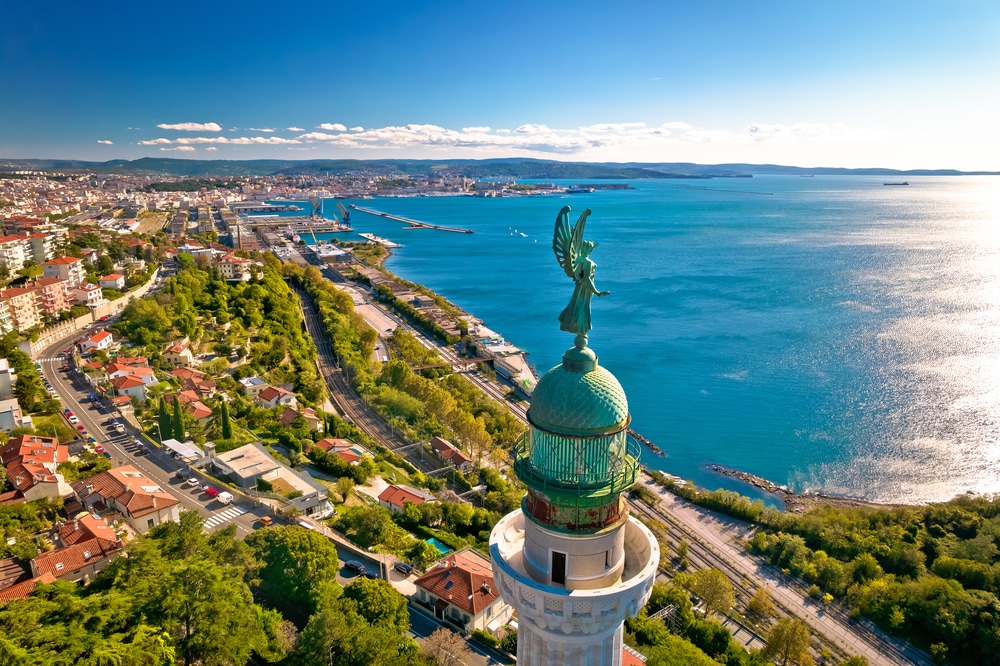
Located in Italy’s easternmost corner, the region borders Veneto to the west and south, Slovenia to the east, and Austria to the north. If you’re thinking you don’t know much about Friuli Venezia Giulia, you’re certainly not alone! “Friuli” is still under most visitors’ radar when planning a trip to northern Italy. For those who explore here, you’ll discover the beautiful city of Trieste, the ancient Roman city of Aquileia (also a UNESCO World Heritage Site), a cultural blend like nowhere else in Italy, and unspoiled landscapes from the Dolomites to the Adriatic Sea.
Highlights:
- Trieste sits along the shores of the Adriatic. Its main square, Piazza Unita d’Italia, overlooks the sea and is central to the city’s vibe. Trieste has its own character, Italian yet with clear influences from its central European neighbors. Italians love their coffee but in Trieste coffee is a way of life. It’s a major European port for coffee imports which is reflected throughout the city’s charming cafes. Take time to visit the Roman Amphitheater, stroll the waterfront, and see the city and its coastline from up above at Castello di San Giusto.
- Discover sites many travelers (and tour buses) to Italy miss! Beautiful Miramare Castle, overlooking the Adriatic Sea, was built by Archduke Ferdinand Maximilian of Hapsburg for his wife. Aquileia’s roman ruins date back to the 2nd Century and are among the most important archaeological sites in northern Italy. Large portions are still unexcavated but you can see things like the city’s Forum, defensive walls, and what was an indoor market area. While in the city of Aquileia, stop to see the Basilica with 4th Century mosaic floors.
Hidden Gems:
- Pordenone and villages in the surrounding countryside
- Udine
- Cividale del Friuli
- Grado
- Fusine Lakes
How to Get There:
- Trieste has an airport about 30 minutes northwest of the city. However, there are limited flights in and out of this airport. International travelers arriving by train should consider flying to Venice’s Marco Polo Airport, which is about 90 minutes by car from Trieste. From Venice Mestre train station, it’s also about 90 minutes by train to Trieste.
- High-speed trains also connect Trieste to cities like Turin (5 hours), Milan (4 hours), and Bologna (3 1/2 hours). High-speed trains also connect Udine and regional trains connect to larger towns.
Discover each of the Northern Regions of Italy.

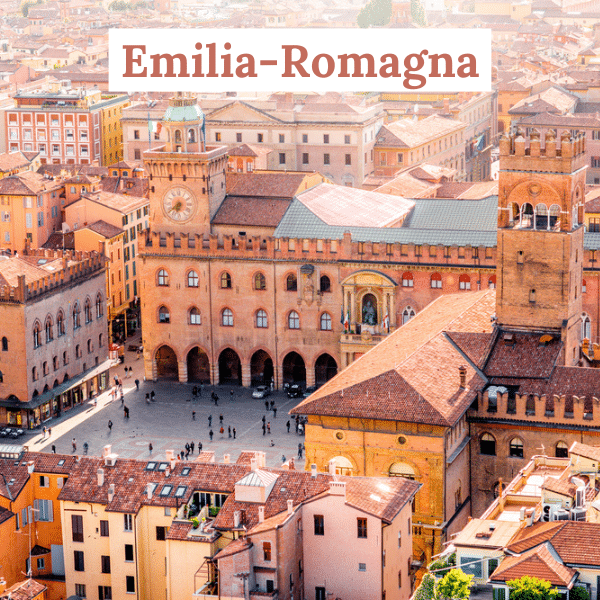
North Italy Regions
Northern Italy is an absolute dream destination! From the classic cities, historic sites, medieval castles, beaches, mountains, beautiful countryside, art, culture, and food, you can plan an unforgettable trip that’ll have you imagining your return visit before you even say arrivederci!
What are your questions about the northern Italian regions?

